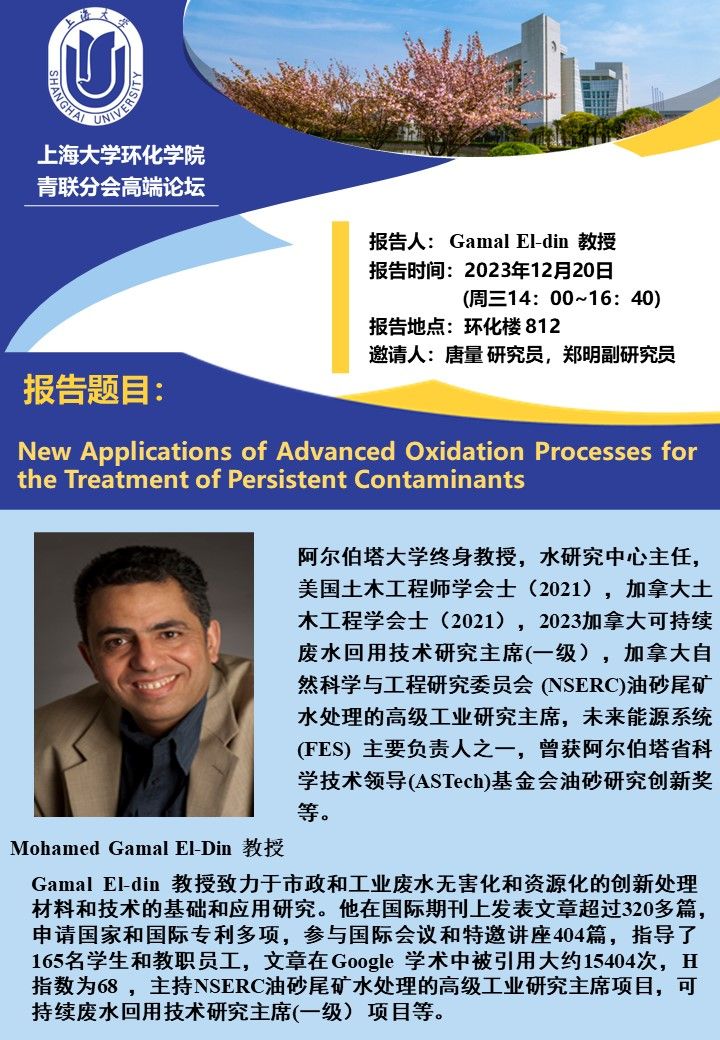报告题目:New Applications of Advanced Oxidation Processes for the Treatment of Persistent Contaminants
报告人:Gamal El-din 教授 (阿尔伯塔大学)
报告时间:2023年12月20日 周三 14:00—16:40
报告地点:环化楼812
邀请人:唐量 研究员, 郑明 副研究员

Abstract
Micropollutants, whether of natural or anthropogenic origin, exist in the environment at exceptionally low concentrations, typically measured in nanograms per liter. Their journey spans from production and utilization to eventual disposal into landfills, soils, and wastewaters, ultimately finding their way into surface and groundwater. Here, they can exert adverse ecological and public health impacts. The diverse chemical structures and reactivity of micropollutants necessitate ongoing exploration of various removal techniques. Among the treatment approaches, advanced oxidation processes (AOPs) stand out as a viable option for addressing micropollutants resistant to conventional treatments. Ozonation, a key AOP, selectively transforms micropollutants through direct oxidation/reduction, cycloaddition, electrophilic substitution, or nucleophilic reactions. To optimize ozonation efficiency, catalysts are introduced to accelerate ozone reactions, enhance removal and mineralization rates, and reduce toxicity. Notably, powdered activated carbon serves as an effective catalyst in ozonation, functioning as an adsorbent, reaction support, or radical initiator.
Photocatalysis has also emerged as a promising, cost-effective, and environmentally friendly method for micropollutant degradation. Graphitic carbon nitride (g-C₃N₄), with its outstanding solar irradiation performance, stands out as an ideal candidate for wastewater treatment. Its simple synthesis from abundant precursors, coupled with distinctive structural and optical properties, positions g-C₃N₄ as an eco-friendly material for degrading organic contaminants, thereby mitigating the environmental impact associated with conventional treatment methods. Similarly, a novel photocatalyst, Bi2WO6/NiO/Ag, featuring a hierarchical flower-like Z-scheme heterojunction, has demonstrated exceptional stability and photocatalytic activity across a broad light spectrum. Successfully applied in the remediation of industrial process water, this catalyst represents a noteworthy advancement in sustainable water treatment solutions.
This presentation aims to provide an overview of the key advantages and drawbacks of these advanced oxidation processes in removing persistent contaminants of emerging concern. Additionally, it will offer a detailed explanation of significant advancements in the field of AOPs.
